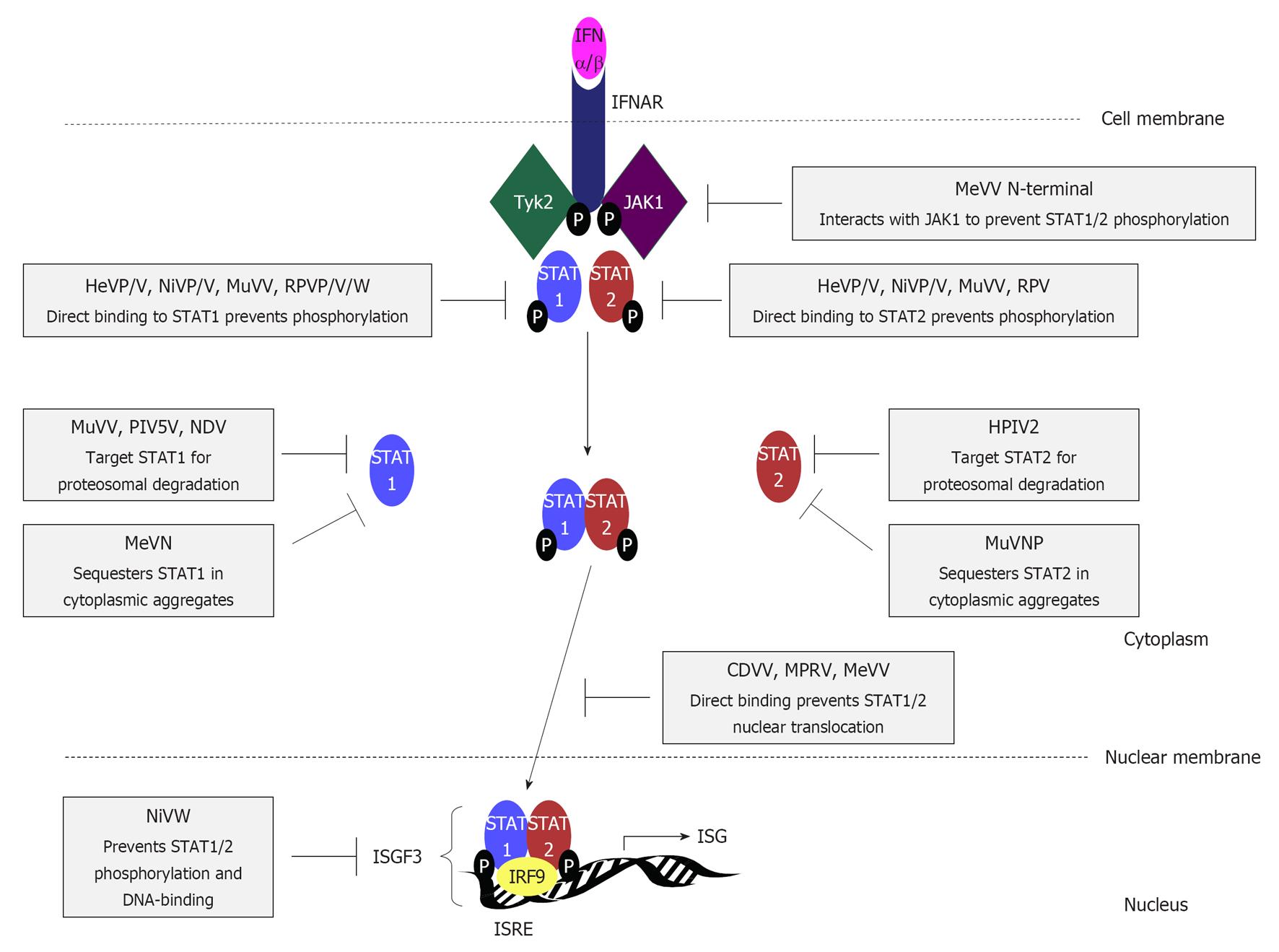Copyright
©2013 Baishideng.
Figure 4 Interferon signalling pathways are targeted by paramyxovirus interferon-antagonist proteins through diverse mechanisms.
Interferon (IFN)β binds to type I IFN receptor subunits IFNα/β receptor (IFNAR)1 and IFNAR2, causing dimerization, activation and phosphorylation of the receptor-associated kinases Janus kinase 1 (JAK1) and tyrosine kinase 2 (Tyk2), to create docking sites for the SH2 domains of signal transducers and activators of transcription (STAT)1 and 2. STAT1 and 2 are phosphorylated by Tyk2 and JAK1 respectively, and form a heterodimer that translocates into the nucleus, forming the heterotrimeric transcription factor complex IFN-stimulated gene factor 3 (ISGF3) with IFN regulatory factor (IRF)-9. ISGF3 binding to IFN stimulatory response element (ISRE) sequences in the promoters of hundreds of IFN-stimulated genes (ISGs) activates the transcription of antiviral and immune-modulatory proteins to establish an antiviral state in infected and neighbouring cells, and contribute to shaping the adaptive immune response. STAT1 and/or STAT2 are targeted by almost all paramyxoviruses through the activity of several IFN antagonists by mechanisms that are reported to differ significantly; mechanisms and specific viral proteins responsible are indicated (see text for details). HeV: Hendra virus; NiV: Nipah virus; MuV: Mumps virus; RPV: Rinderpest virus; MeV: Measles virus; PIV5: Parainfluenza virus 5; NDV: Newcastle disease virus; hPIV: Human PIV; CDV: Canine distemper virus; MPRV: Mapuera virus.
- Citation: Audsley MD, Moseley GW. Paramyxovirus evasion of innate immunity: Diverse strategies for common targets. World J Virol 2013; 2(2): 57-70
- URL: https://www.wjgnet.com/2220-3249/full/v2/i2/57.htm
- DOI: https://dx.doi.org/10.5501/wjv.v2.i2.57









